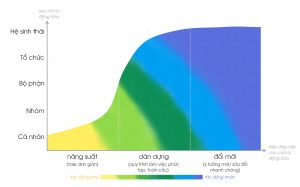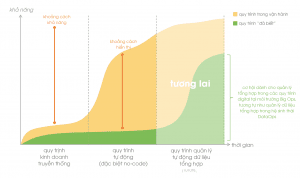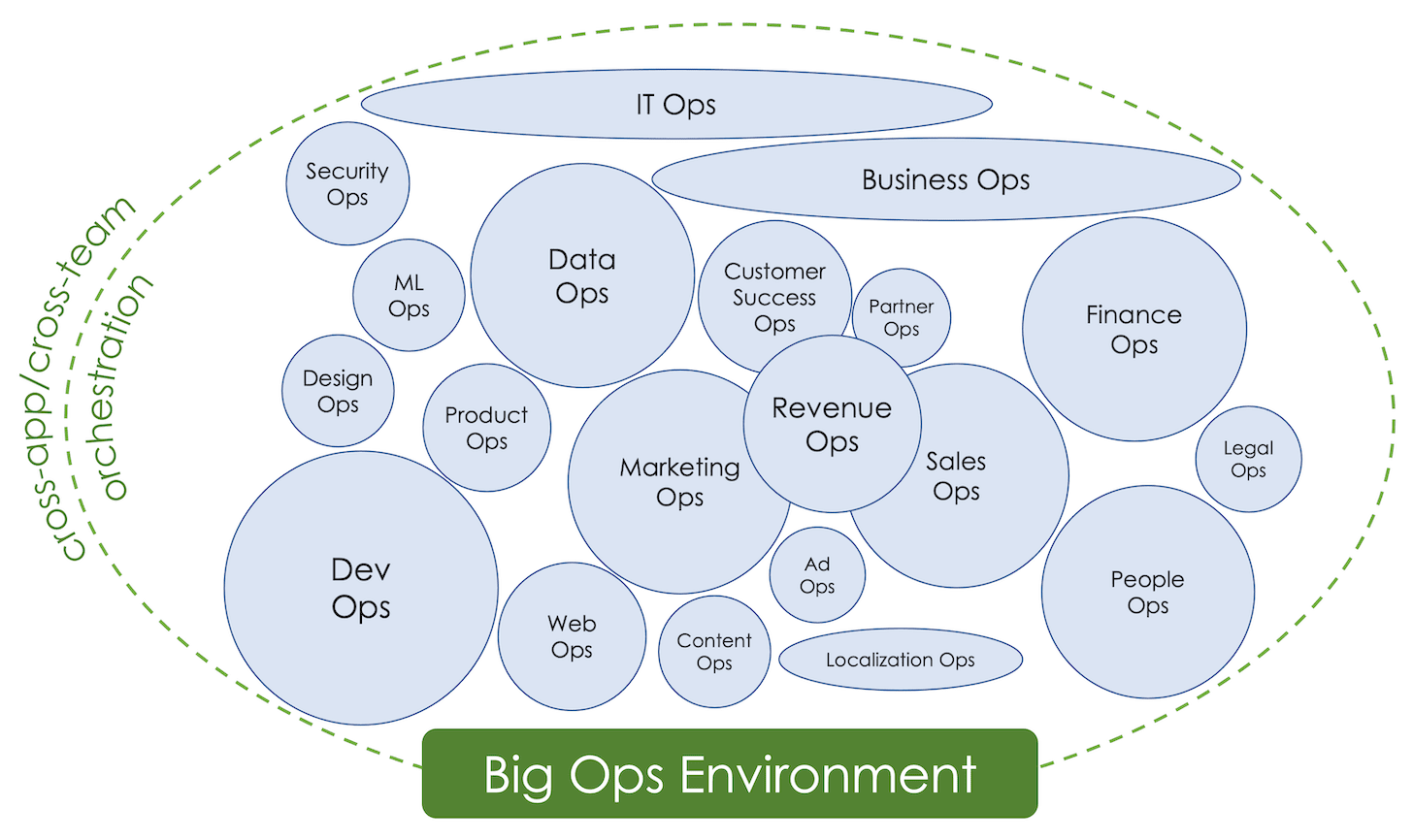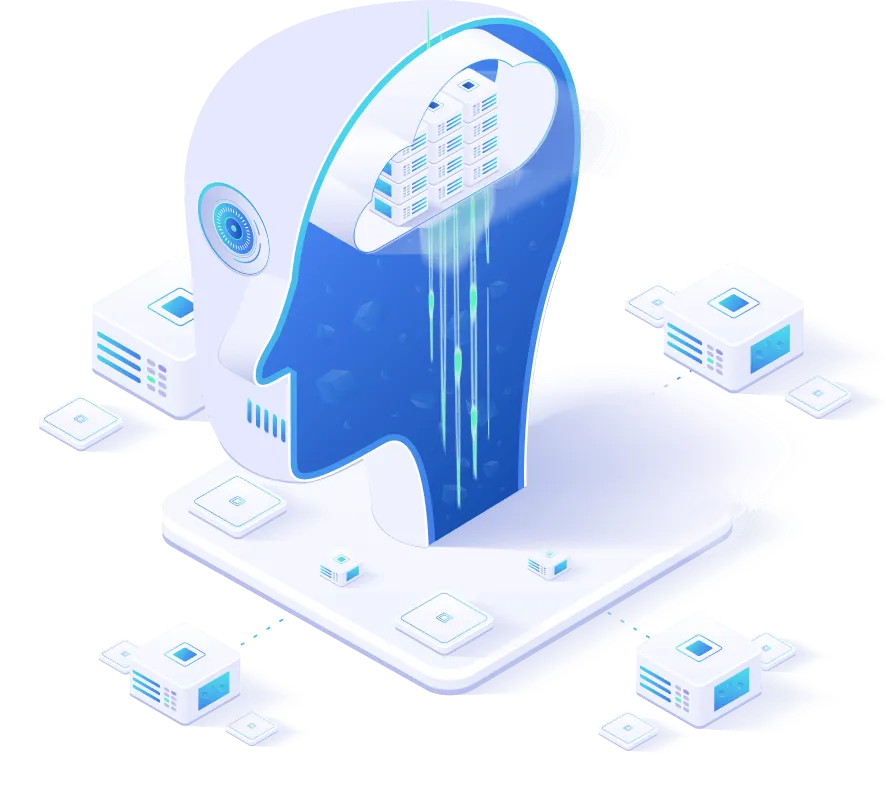Hi everyone, today I will share a little bit about automation in large enterprises. In short, in today's era, the challenge for business technology is less about managing a large amount of data - Big Data - most of which is in underground data lakes, out of reach of everyday business users.
There is currently a debate about the explosion of digital processes in the 21st century across organizations that are actively engaging that data as part of their direct business operations.
Clusters of applications, agents, automation, and algorithms have sprung up everywhere in the back and front office. And each of these clusters has its own “operations” specialists: marketing, sales, customer success, partner, web, modifications, finance, etc. This entire environment and its bustling ecosystem is what I refer to as “Big Ops.”

The chart above was developed in collaboration with the team at Workato, taken from a post about their Series E funding, and it outlines the impact that automation – especially digital automation – can have in a company.
The y-axis represents the scope of an automated workflow.
At the basic end of the spectrum, you have highly localized automation tasks that individuals perform in their day-to-day work. These days, there are a lot of things built into software everywhere, from macros and keyboard shortcuts to sales pipelines and CI/CD scripts. Very useful for individual productivity, but narrow in scope.
But as you slide up the y-axis, automation is applied across larger groups: small teams, large teams, entire departments, entire organizations, and even the broader ecosystem of customers, partners, and suppliers outside the walls of a company.
This x-axis reflects the higher-order effects of such automation – especially automations that span multiple groups of people and applications.
At its core, automation is really about productivity. It allows repetitive tasks to run at computational speed and scale instead of being performed slowly and manually. This is valuable for a lot of use cases, especially for digital professionals. But its impact is generally linear. You’re trying to get more work done in less time, with the added benefit of fewer random errors along the way.
But things start to get really interesting when you move along the x-axis. Digital workflow coding is a way to define business processes that span more than just multiple applications and teams. They become clearly defined, deterministically managed ways to coordinate complex activities across the entire digital enterprise, from onboarding new employees to processing orders to cash in sales, service, and finance.
They become the connective tissue of the Big Ops environment.
Dare I call them coordination systems?
And when I say “coding” digital workflows – defining triggers and actions, steps and decisions – I should emphasize that most of this is now done with low-code/no-code tools that any business user interested in the process can comfortably manipulate.
This pushes us toward a higher order effect: leveraging automation to enable and accelerate innovation.
As more and more companies are connected to these multi-application, multi-team orchestration systems, the ability to quickly adapt those workflows to new requirements – adding a new step, triggering a new function, transferring a new piece of data, etc. – expands dramatically.
New ideas can be quickly tried out and iterated across a broad canvas of the entire digital organization. On the proximal side, it’s as easy as dragging and dropping a process map onto your screen. (Or do it in a 3D metaverse model of the company with your VR headset, if you want to project a few years into the future.)
To me, this is the essence of digital transformation. It makes business operations as malleable as software.
The impact of these higher-order effects of orchestration and innovation is more than additive. It is twofold, due to both the scale of connected teams and applications and the agility and imagination an automated enterprise can use effectively.

It's not all rainbows and puppies in the Big Ops automation realm, however.
Automation is proliferating across almost every major application. In many ways, this is a great thing – it is closing the “capability gap” we had with traditional business processes that were slow and difficult to implement and maintain.
But as a result, a new challenge is emerging: a “visibility gap” in keeping track of all these disparate automation processes spread across a myriad of dedicated platforms and applications. Managing them, maintaining them, handling personnel changes, gracefully shedding them, managing the ripple effects they have on each other, etc.
The simple answer is to automate everything through one and only one automation platform.
In practice, however, that complete integration is unlikely to happen. I think it’s possible to standardize a solution for the workflows of multiple teams and multiple applications within a given company. But as the number of different software applications in the world continues to grow—not shrink—with automation features of one kind or another built into many of them, these wild horses will not be easily tamed.
(Hey, philosophically, all software is digital automation.)
Who knows what I've automated with my Ideas documents, Trello boards, Google sheets? And increasingly, the sophistication of what I can automate with such things is remarkable.
However, while I am skeptical of consolidation as a magic bullet in ever-expanding tech stacks, I am quite optimistic about aggregation as a model for harnessing the power of such digital diversity.
Just as SaaS management platforms (e.g. Blissly, Torii, BetterCloud) and data governance/security platforms (e.g. DataGrail, OneTrust) have brought meta-management into broad technology stacks and data sources and sinks have mushroomed, I think there is an opportunity for meta-management processes.
Imagine a tool that could discover and monitor automation across all the different applications in your company. That would be invaluable in taming and tuning a burgeoning Big Ops environment.
Of course, this will require most applications to expose their automation via APIs. And today, API coverage for such use cases is unfortunately quite sparse. But as the challenges and opportunities of Big Ops become more apparent to more and more companies, the market pressure to expose such process data will increase rapidly.
Learn more at: https://chiefmartec.com/2021/11/higher-order-effects-of-automation-in-big-ops/





